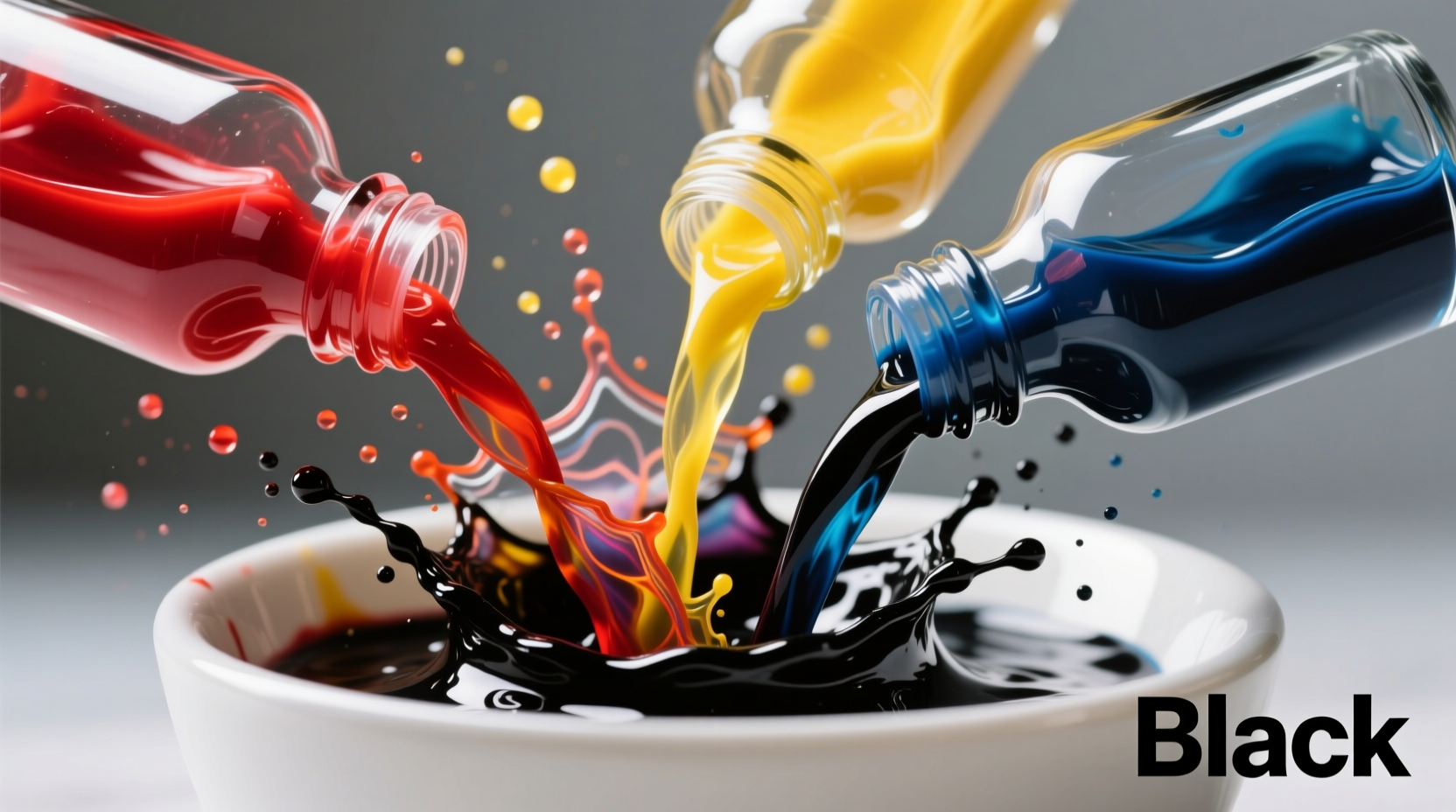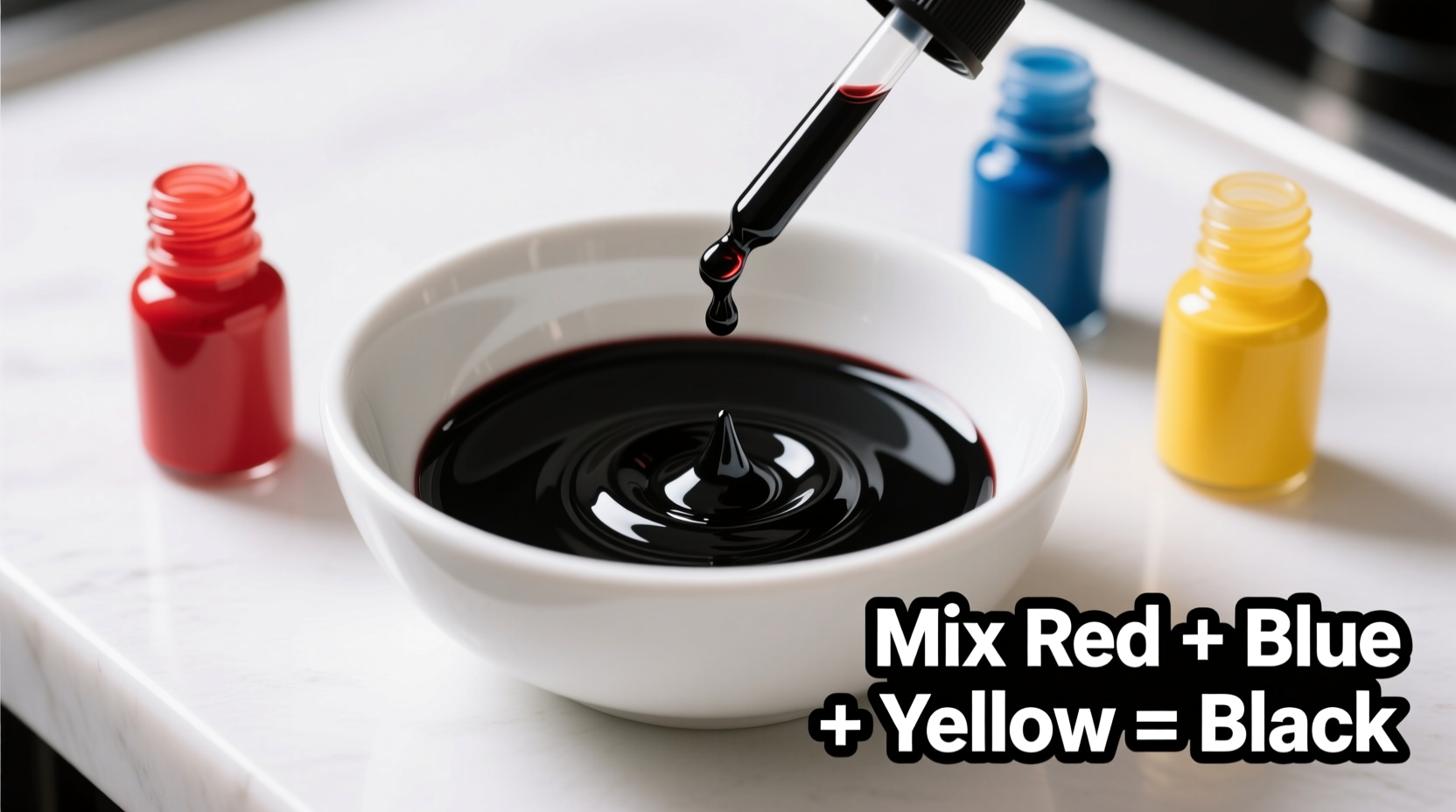Creating the perfect black hue for your culinary creations can transform ordinary desserts into striking centerpieces. Whether you're preparing Halloween treats, elegant wedding cakes, or themed party desserts, achieving true black coloring presents unique challenges that most home bakers face. This comprehensive guide reveals professional techniques that deliver consistent, rich black coloring without compromising taste or texture.
Understanding Food Coloring Fundamentals
Before attempting to create black, it's essential to understand how food coloring works. Unlike printer ink that uses CMYK (cyan, magenta, yellow, black), food coloring operates on an RGB (red, green, blue) model where combining all primary colors creates black. However, food coloring pigments behave differently than digital colors, making true black difficult to achieve.
Gel food coloring produces more vibrant results than liquid varieties because it contains higher pigment concentration with less liquid content. This prevents your batter or frosting from becoming too runny when adding substantial amounts of coloring. Professional bakers consistently recommend Wilton's or Americolor's gel coloring for best results when creating dark shades.

Step-by-Step Black Food Coloring Methods
Method 1: The Basic RGB Approach
The most accessible method for home bakers involves combining equal parts of red, green, and blue food coloring. Start with 5 drops of each color per cup of frosting or batter, then adjust as needed:
- Mix 5 drops of blue food coloring into your base
- Add 5 drops of red coloring and blend thoroughly
- Incorporate 5 drops of green coloring
- Adjust by adding equal amounts of all three colors until desired darkness is achieved
This technique works particularly well for buttercream frosting. For cake batter, you'll need approximately 30-40 drops total per two-cup batter to achieve deep black coloring.
Method 2: The Professional CMY Adjustment
Advanced bakers often use a modified approach that accounts for the limitations of food coloring pigments. Since true cyan and magenta are difficult to achieve with standard food coloring, this method uses available colors to approximate the CMY model:
- Start with royal blue (6 drops)
- Add super red (8 drops)
- Incorporate leaf green (6 drops)
- Adjust with tiny amounts of brown (1-2 drops) to eliminate brownish undertones
This method produces a richer, more neutral black than the basic RGB approach, especially in chocolate-based recipes where standard black can appear muddy.
Method 3: Commercial Black Food Coloring
For consistent results with minimal effort, many professional bakers opt for pre-mixed black food coloring. Brands like AmeriColor Super Black and Wilton's Black Food Color Gel deliver intense color with just 15-20 drops per cup of frosting. These specialized formulas contain optimized pigment combinations that overcome the limitations of mixing primary colors.
| Mixing Method | Color Accuracy | Effort Required | Best For |
|---|---|---|---|
| Basic RGB (equal parts) | ★ ★ ☆ ☆ ☆ | Low | Quick projects, light bases |
| CMY Adjustment | ★ ★ ★ ★ ☆ | Moderate | Professional results, all bases |
| Commercial Black | ★ ★ ★ ★ ★ | Low | Consistent results, time-sensitive projects |
| Activated Charcoal | ★ ★ ★ ☆ ☆ | Low | Non-edible decorations, specialty applications |
Troubleshooting Common Black Coloring Problems
Many bakers encounter issues when attempting to create black food coloring. Understanding these common problems and their solutions will save you time and ingredients:
Why Your Black Looks Brown Instead of True Black
Food coloring pigments aren't perfect representations of digital colors. When mixing primary colors, you often end up with a dark brown rather than true black due to pigment limitations. The FDA-approved colorants used in food coloring simply cannot replicate the full spectrum of visible light.
Solution: Add small amounts of purple or brown food coloring to neutralize brownish undertones. Professional bakers recommend adding 1-2 drops of brown coloring for every 15 drops of primary colors to achieve a more neutral black.
Adjusting for Different Food Bases
The base ingredient significantly affects your final color. Consider these context boundaries when creating black food coloring:
- White frosting: Requires less coloring (15-20 drops total per cup)
- Vanilla cake batter: Needs more coloring (30-40 drops per two cups)
- Chocolate recipes: Creates muddy results; use less coloring (10-15 drops) for dark gray effect
- Cream cheese frosting: May require additional coloring due to yellow undertones
Remember that colors deepen over time. Your black creation will appear darker after 12-24 hours as the pigments fully develop. Always make your coloring mixture slightly lighter than desired and allow time for maturation.
Practical Applications and Pro Tips
For the most dramatic visual impact, pair your black creations with contrasting colors like bright red, gold, or white accents. When making black frosting, pipe designs while the frosting is still workable, as extremely dark colors can make intricate details difficult to see.
Store homemade black food coloring in an airtight container away from light. Properly stored, it maintains potency for up to six months. For best results, make small batches as needed since food coloring can separate over time.
When working with black food coloring, always wear gloves to prevent stained hands. Consider using separate mixing tools for dark colors to avoid cross-contamination with lighter shades in future projects.
Safety Considerations
The FDA regulates food coloring additives under 21 CFR Part 74, ensuring approved color additives meet strict safety standards. When creating black food coloring using standard food coloring products, you're working with ingredients that have undergone rigorous safety testing.
While some alternative methods suggest using activated charcoal for black coloring, the FDA has not approved activated charcoal as a food coloring additive in the United States. For edible creations, stick with FDA-approved food coloring products to ensure safety and compliance with food regulations.











 浙公网安备
33010002000092号
浙公网安备
33010002000092号 浙B2-20120091-4
浙B2-20120091-4